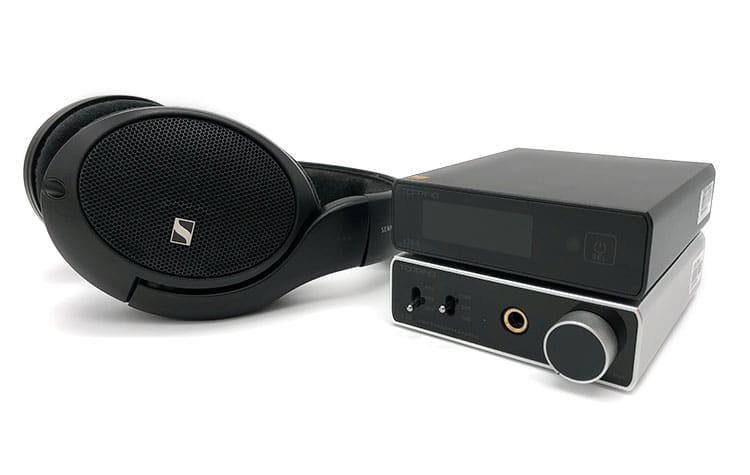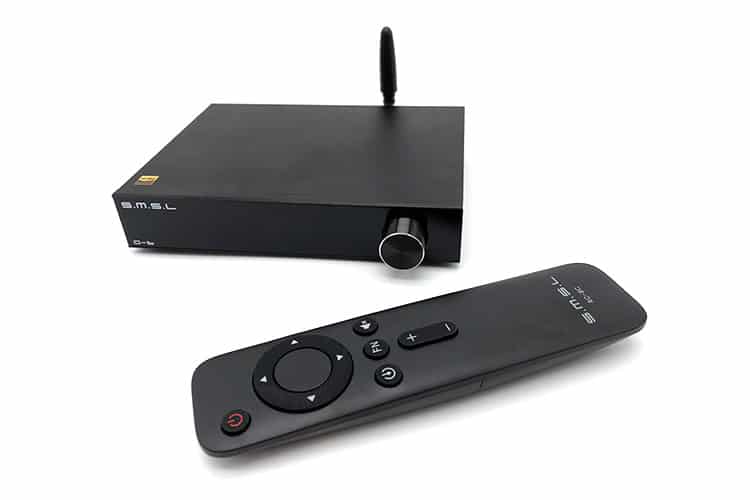Synergy
Pairings
I’ll be sharing the L30 II amplifier pairing impressions when the review of that comes out but for those holding onto their L30, I also got a glimpse of what the full stack experience sounds like.
First, the extension and definition of the Burson Conductor Reference (C3R) gave a contrasting characterization to the E30 II. With the bass region, the C3R allowed the E30 II to go as deep and immense as it could but when it comes to the treble region, the lack of clarity showed its insufficiency.
The upper midrange of the Sennheiser HD560s isn’t as shouty and due to the forward presence, the area isn’t left hanging. The E30 II also gave the HD560s some much-needed heft and scale to deep notes which in a way is causing it to be looser sounding.
I find that the vocal tone of the Thieaudio Wraith meshes well bolstering its lower midrange and complementing the lush upper midrange. However, the treble region is being withdrawn of definition and the placement of images tends to blur a bit more than expected.
So far, I was still wondering what happened to the Topping energy I was used to but it seems the L30 has a lot to say about that. Immediately, everything sounded thinner and at the same time the energy being thrown by the combo spiked up a notch.
Bass guitars and kick drums still sound immense but the feeling of spaciousness and weight tightened up. It could be observed as a leaner version of the earlier proud bass profile that now focuses more on delineation than extension.
The spirited presentation is easier to see with instruments all coming in at a faster speed. Still, guitars may be brighter, but the pairing with the L30 only further flattens the reverberating areas.
Select Comparisons
SMSL D-6
$169.99
Technical
A noticeable shared spec between the two DACs is the use of dual AKM chips coming from the same AK4493 lineage. Though sold cheaper, the E30 II is also updated to the latest AK4493S chip using the VELVET SOUND technology.
Where the extra dough spent on the D-6 shows its merits is in other matters like the addition of a Bluetooth receiver. And by maximizing the available potential of having two converters, the D-6 is not only preamp capable like the E30 II but it is also being marketed as a balanced capable device.
Design
What I like about both designs is how simple yet solid the overall impression is. The D-6 is a wide and low-profile DAC while the E30 II doesn’t mind the extra height since it lets it keep a smaller footprint.
Topping also applied a rounder and less chiseled flair to their chassis which leans the D-6 into the more serious direction. And offered only in black, unlike the E30 II which has an available silver option, the D-6 is quite set in keeping a covert guise.
The seven-segment display on the front of the D-6 uses plexiglass as a cover. A prominent difference here is the physical volume wheel that lets users alter the volume of the DAC without needing the remote.
Performance
Using the same line of AKM chip as the E30 II, I was expecting a closer tonality between the two devices. But in reality, I find the D-6 to be the nimbler one as it steps away from the usual AKM signature sound.
Expect more delineated bass strings on the D-6 as it has the cleaner low-end which is better for those looking for an honest and fast bass response. The E30 II will be driving more towards a roomier and weighted kick drum presentation.
The upper midrange of the D-6 though is the spicier of the two with the detail retrieval kept neck and neck. Dive a little deeper and the extra energy on the D-6 isn’t without its merit as it returns a more chiseled edge.
While the D-6 could also get busy when playing an electric guitar, it still has the slight upper hand allowing the scene to better flesh out. But while the D-6 gives violins a more sparkly quality, the E30 II shows more finesse in giving cymbals their signature metallic splash.

xDuoo MU-601
$129
Technical
Flip the toggle switch to power the xDuoo MU-601 and that’s all the control you need to use it as a DAC. More barebones than the E30 II, the MU-601 is still an interesting piece of equipment.
Typically found towards the rear, there is a second USB-C input at the front of the unit for easier accessibility. It also makes up for its lack of input choice in outputs as it provides two pairs of RCA sockets and a digital passthrough ready to interface anytime.
There is no AKM chip inside the MU-601 since xDuoo went the ESS route and used a single ES9018K2M to convert digital signals to analog. Music playback puts the E30 II ahead since the MU-601 is limited to DSD256 and 32bit/384kHz.
Design
The sandblasted aluminum of the MU-601 has a soft form towards the front due to the sloped front lip transitioning well to the black glass panel protecting the small screen and other components. Even without a touch panel to brag about, the LED indicator embedded in the logo and the toggle switch uplifts the MU-601 in addition to its cheekier paint.
Unlike the E30 II which wraps the main chassis around the front and rear face for a cleaner look, the MU-601 has screwed-on vent plates for its sides. At least the taller build of the MU-601 lets it fit two pairs of RCA sockets in parallel with space to spare for a coaxial passthrough and more.
Performance
Not restrained in adding some flavor to the sound, xDuoo took the enjoyment route tuning the MU-601. Arranged to not go overboard, everything just seems less exacting and sedate.
The MU-601 still can’t compare to the bigger size of bass notes in the E30 II even though it similarly adds muscle to beats. With bass guitar alone, the E30 II wins in bite and detail retrieval but the MU-601 does appear neater when a kick drum enters the mix.
Separating the tonality of vocals is the thicker sway of the MU-601. Those who prefer a soulful rendition of female artists will appreciate its presentation against the more dignified E30 II.
With a slightly darker tuning, the MU-601 is not just slower sounding when scaling snare drums but it is more challenging as well in subtleties. As much as I like its more melodic character given to violins, its bigger presence here and less precise placement detract from the experience.
The grittier MU-601 with its thinner treble timbre doesn’t help in imaging and layering. The E30 II is the better DAC with only a minor comment that it places instruments more stiffly.
SMSL DO100
$239
Technical
One ES9038Q2M DAC chip is already potent enough for some balanced capable DACs out there but SMSL also decided that adding another wouldn’t hurt. Still, versus the newer AK4493S of the E30 II, the ESS chip on the DO100 seems more ancient.
What’s adding interest to the DO100 is the installed QCC5125 from Qualcomm that enables LDAC playback from compatible devices. Those who want the choice of being able to stream would appreciate the simple inclusion of this feature.
Assisted by a low noise switching power supply and four OPA1612 op-amps, the DO100 measures a lower THD+N of 0.00008%. This reminds us that the analog side of the DO100 is no slouch considering that there are also full-size XLR outputs fitted on the rear.
Design
In the simplest sense, both the E30 II and the DO100 trace the same fully glassed face enveloped in a solid block of aluminum. Mind you though that the SMSL DAC won’t look cheap given a proper look around.
The earliest detail I found separating the two is the blacked-out tempered glass used by the DO100. Removing any suggestion of the hiding display beneath, the seven-segment LED will only reveal its presence once the volume wheel is pressed turning the unit on.
Speaking of the volume wheel, those who’ll be interacting with either of the DACs in close range will find it easier to adjust the DO100 without needing to find the remote control. It may not be as modern as the touch panel of the E30 II and the quality of the knob itself is just average but surely some will find the DO100 more reassuring.
Performance
More clinical sounding than the E30 II, the DO100 pushes back on weight and sub-bass presence to focus on being more mature. The delineated nature of the DO100 gives a stronger emphasis on image clarity and separation.
The DO100 is also less congested by prudently taming excess energy with finesse to set an appropriately spacious vocal and instrument charisma. Reverberations of the piano peak through while the lower tones are more relaxed and weighted.
Cymbals on the E30 II are metallic and splashy but when placed side by side with the DO100, it falls short of the realistic dispersion shown in the latter. Add this to the wider stage of the DO100 with its less walled-in attribute.
Our Verdict
The Topping E30 II with its refreshed specs may not be the most technical DAC out there but it sure is worth a second look for delivering a distinctive take on sound in a sea of measurement-driven equipment.
But with the current demanding market that it is being targeted for, it remains to be seen the potential of the revived DAC line of Topping. Because it may have two premium AK4493S in its belly the implementation necessary to convey its best is what it needs to make it stand out.
Topping E30 II Technical Specifications
- DAC: 2 x AK4493S
- Input: USB, Coax, Optical
- Playback USB: 32bit/768kHz, DSD512
- Playback Coax/Opt: 24bit/192kHz
- THD+N: <0.00015%
- SNR: 123dB
- Dynamic Range: 123dB
- Output level: 2.1Vrms
- Output Impedance: 20W





